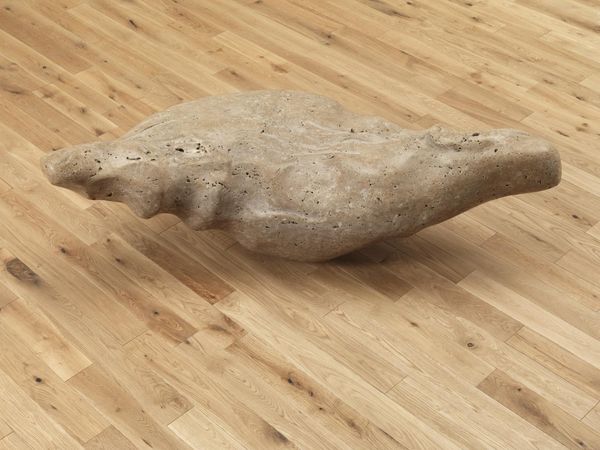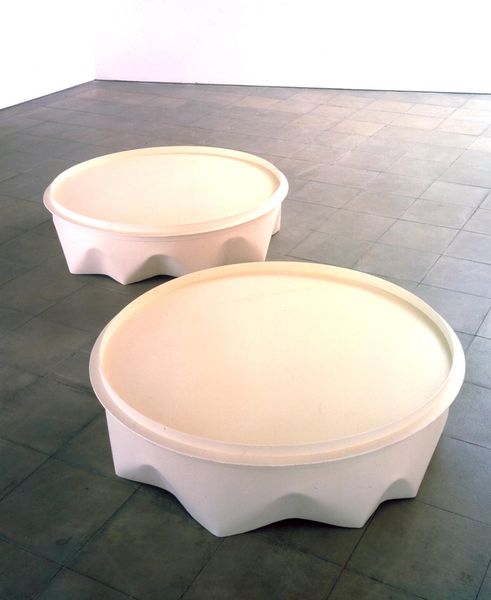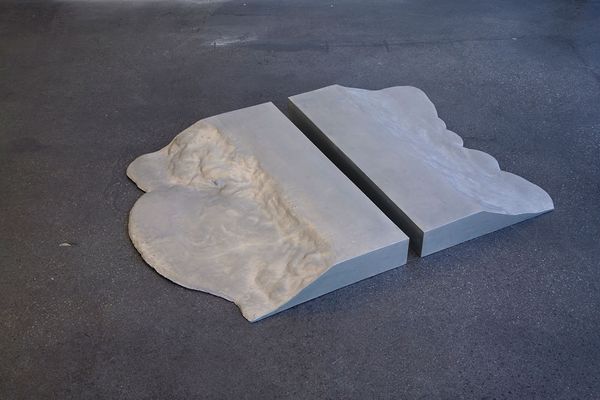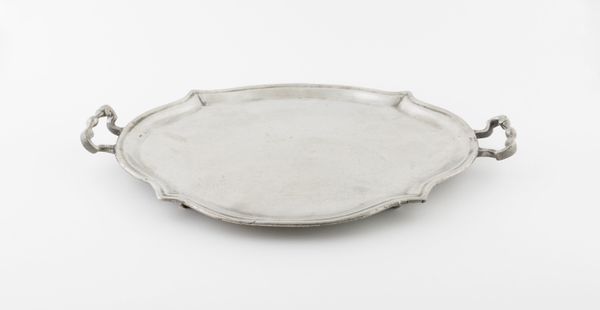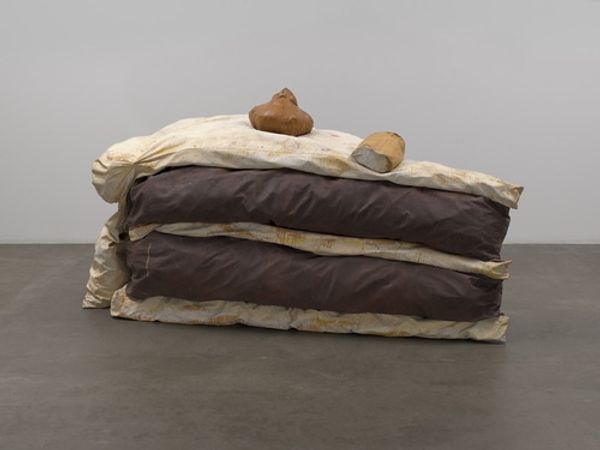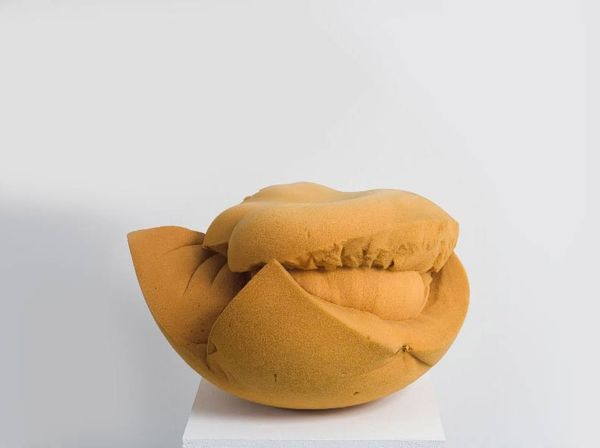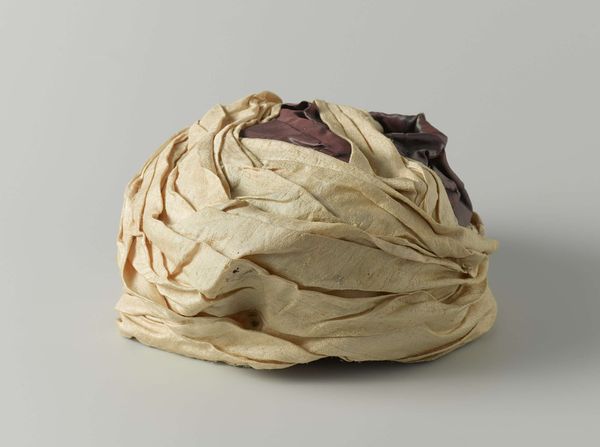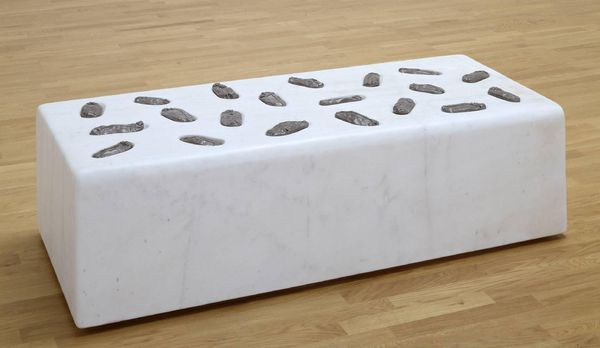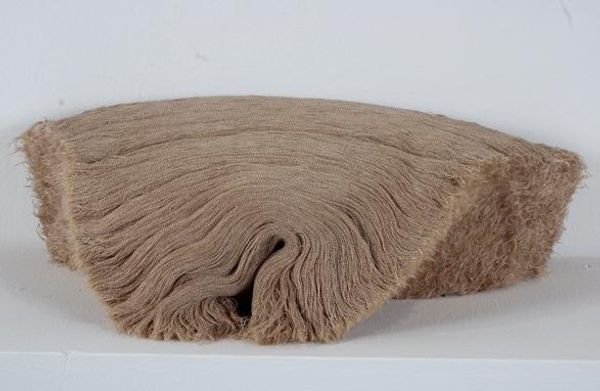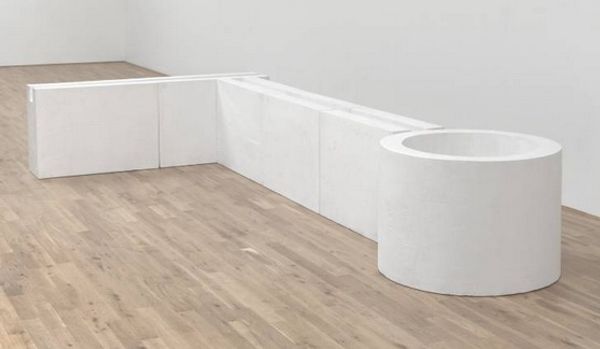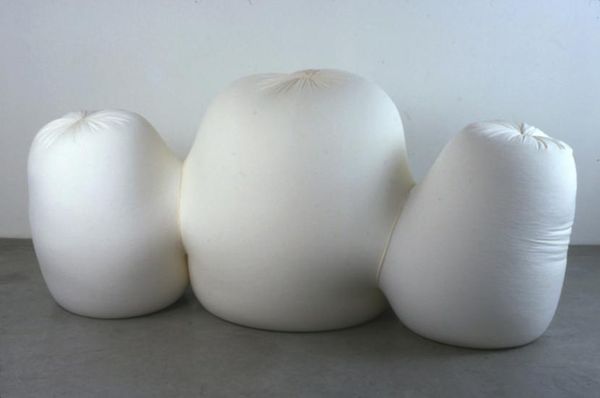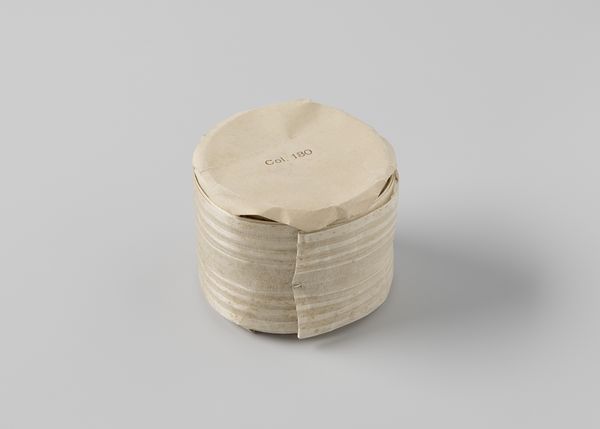
Dimensions: object: 181 x 302 x 302 mm
Copyright: © The estate of Barry Flanagan, courtesy Plubronze Ltd | CC-BY-NC-ND 4.0 DEED, Photo: Tate
Curator: Barry Flanagan, known for his playful approach to sculpture, created "sand muslin 2." It's currently held in the Tate Collections. Editor: Well, my first thought is: what delightfully understated objects! So quiet, almost meditative. Curator: Flanagan often challenged traditional notions of sculpture, and this piece is a prime example. It feels like he’s asking us to consider the inherent qualities of the materials themselves. Editor: Absolutely. The work foregrounds the physical labor involved in its creation. Muslin and sand... humble materials, transformed by process. Curator: Indeed. I feel a sense of lightness, despite the solid forms. A bit like the earth itself, yielding and strong. Editor: And perhaps a commentary on consumerism? These objects, devoid of overt narrative, invite us to contemplate the simple beauty of the handmade. Curator: A lovely thought, one that resonates deeply. Editor: It's made me think differently about sand and cloth!
Comments
Join the conversation
Join millions of artists and users on Artera today and experience the ultimate creative platform.
tate 8 months ago
⋮
Flanagan was one of the most significant and inventive British sculptors of his generation. First emerging in the mid-1960s, Flanagan’s work was highly innovative and departed from the sculptural practice of his tutors, most notably in his choice of ‘un-sculptural’ materials. He filled pre-stitched cloth ‘skins’, often with sand and wet plaster, to produce bulging, organic forms. As Flanagan explains:‘I liked the idea that the shapes virtually made themselves.’ He maintained a consistently ironic attitude towards sculpture, emphasising how intrinsic qualities of the materials and making process determined the final shape and appearance Gallery label, September 2016
